I know, I know. This is a lot of talking about ourselves instead of talking about kiddos. We can’t pour from an empty cup, and we also can’t teach what we don’t practice or model ourselves. So my challenge this time around is to practice what we preach–we are working on reprogramming our reflexes this summer to minimize the cycle of stress and set ourselves up for success this fall.
Summer is a great time to practice and develop our own skills so we can pull them out of our toolbox when we are challenged with the children. Just like the gratitude jar, you can create a small toolbox or visual reminder of the tools you have to help you support the children in your classroom. Maybe these are mantras you write in a fancy script to post on the wall, or a literal box of symbolic tools to remind you that two things are true: you can do hard things, and you can also make mistakes. God has given you the grace to do just that – make mistakes and learn from them and help children learn with you as their model in this process.
Here is the toolbox for you–the three things you need to help you when you are triggered or are losing your cool with children. Again, our goal is to acknowledge and practice these skills when we are calm so they become reflexes when we need them most.
- Band-Aids – there is no relationship in our classroom between children that is hurt beyond healing. In moments when we may yell at students, or lose our patience, it is important that we practice regrouping and repairing. Just like a first aid kit helps when we have been hurt, let the Band-Aid remind you that you can help heal any hurt you may have caused, intentionally or unintentionally. Repair your relationships with students by owning up to upset, stating that you were feeling upset or frustrated and that you want to repair the damage that was done. This can be through a handshake, a high five, or a hug.
- Mirror – look at yourself and wonder, what is this feeling trying to tell me? I heard someone say instead of thinking, “what is wrong with me” or “why did I do that,” to ask “what is this anger, this feeling, this reaction trying to tell me?” This helps us to focus on Dr. Bruce Perry’s idea of what happened to you instead of what is wrong with you. This mindset shift means we understand that behavior has meaning, and sometimes we are unaware of what caused us to react in a certain way. This may mean we reflect on what boundary has been crossed, what button has been pushed, or what memory has been recalled that has made us respond in a certain way. When we look at what a feeling is telling us, only then can we understand how to reduce our upset when it eventually happens again?
- Balloon – ok, I will admit, this one seems the silliest. But think about what happens when a balloon is overinflated–it bursts, making a loud and scary noise. What happens when a balloon is filled up with air and then is able to deflate? Think of the silly sounds that a balloon makes instead. This balloon can be your reminder to take a balloon breath when you feel yourself getting upset, but before you explode. Put your hands on your head, and interlace your fingers. As you take a deep breath in, raise your hands like a balloon filling up with air. When you are ready, keep your fingers interlaced, and exhale; if you’re feeling silly or need to really burn off some tension, blow raspberries with your lips to mimic the sound of a deflating balloon. Repeat up to three times–and remember that children love this breathing strategy!
Here is your gentle reminder that your goal is not to be perfect, but rather to model for the children in your classroom what to do when you have made a mistake. We can normalize losing our cool a little bit or making a mistake by narrating what we are doing or feeling, so children feel comfortable doing the same.
As you put together your toolbox and include some of your own silly items to include, remember: You haven't chosen this profession; you were chosen for this vocation. Give yourself some time to relax, and prepare for the next chapter in this journey.
 About the Author
About the AuthorAmy S. Kronberg is an early learning consultant and adjunct professor at the University of Dayton. Mrs. Kronberg began her work in early childhood education at the University of Michigan-Dearborn Early Childhood Education Center, where she learned about the Reggio Emilia philosophy, child-centered curriculum, and playful learning environments. She moved to Dayton in 2013 to complete her Masters of Science in Education, studying early childhood leadership and advocacy so she could learn to support children and families in understanding the value of and celebrating play. She is currently all but dissertation in Educational Leadership at the University of Dayton and specializes in early learning consulting for local nonprofits, infant and toddler learning, and social-emotional development.
Product Highlight
Stories of God's Love My Emotions Video Series
Religious Education for Ages 4-5 and Kindergarten
The My Emotions Video Series corresponds to a unit or chapters in Stories of God’s Love. Teachers and catechists may use the videos in the classroom or virtually, or adults may use the videos with children at home. Each video focuses on emotions that young children experience to help them identify, define, and use their feelings in appropriate ways. The videos help the children understand that they are the shepherds of their own emotions. Each child is responsible for caring for his or her feelings in a healthy way.
The Stories of God’s Love: My Emotions Videos are research-based, utilizing the work of the Collaborative for Academic, Social, and Emotional Learning (CASEL) and the National Association for the Education of Young Children (NAEYC) on building social and emotional skills. The videos may be accessed through Flourish, RCL Benziger’s online platform. A one-year license includes resources for adults both in the classroom and at homes, such as the printable Feelings Chart and Emotion Cards seen in the videos.
When people are healed by Jesus in the Gospels, they are often brought to Jesus by their friends and families. With your students, explore the ways our friends can lead us to Jesus. Read and reflect on the story of the healing of the man who was paralyzed, in Luke 5: 17-26. Here are the key verses to focus on: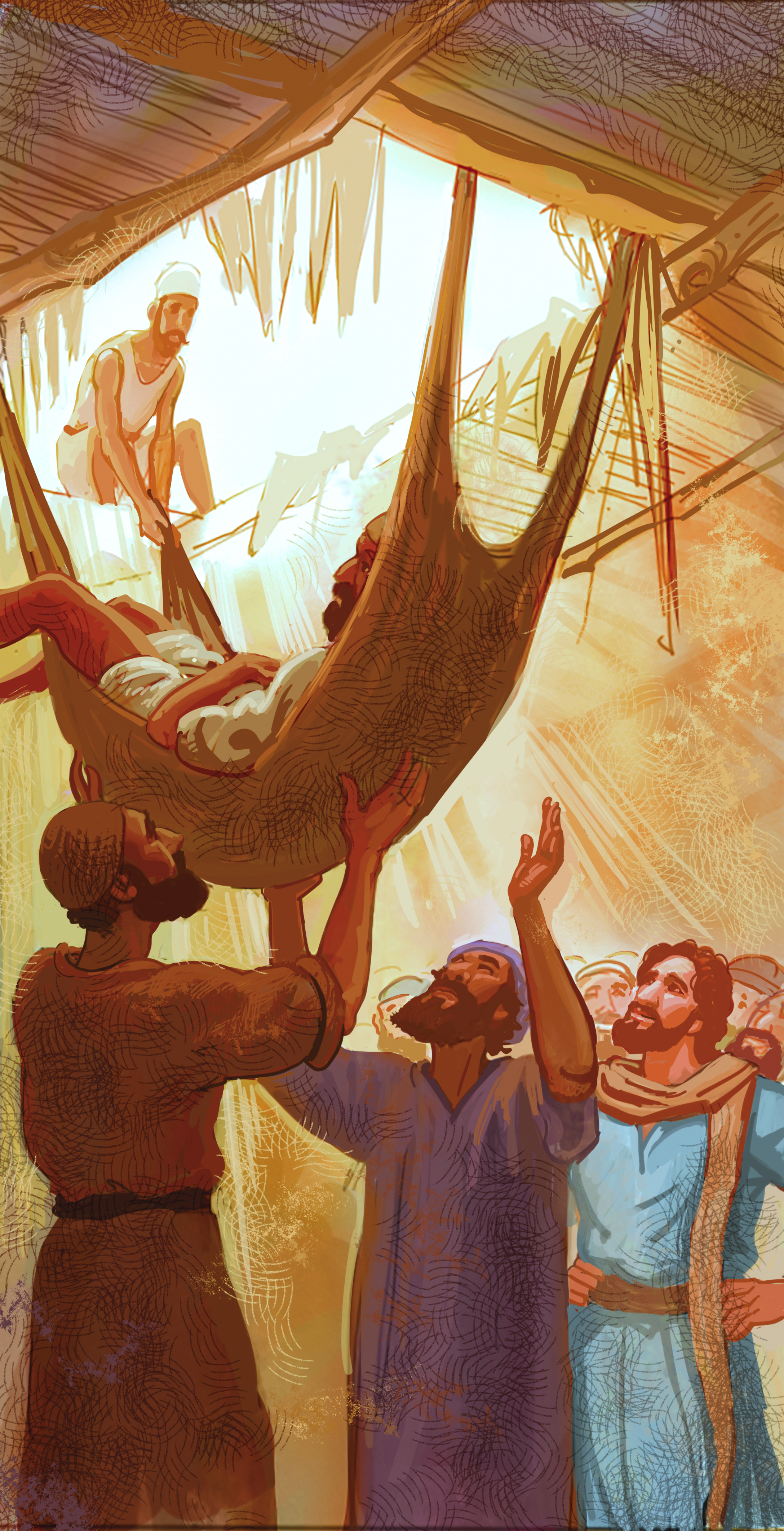
“And some men brought on a stretcher a man who was paralyzed; they were trying to bring him in and set [him] in his presence. But not finding a way to bring him in because of the crowd, they went up on the roof and lowered him on the stretcher through the tiles into the middle in front of Jesus. When he saw their faith, he said, “As for you, your sins are forgiven.” …(Then) he said to the man who was paralyzed, “I say to you, rise, pick up your stretcher, and go home.” He stood up immediately before them, picked up what he had been lying on, and went home, glorifying God.”
Scripture Video: See the Flourish resources for Blest Are We Faith in Action, “Jesus Heals a Sick Man,” Grade 3, Unit 2.
- Why were the people taking the sick man to Jesus?
- What do you think the man’s friends felt when the doorway was blocked?
- Do you think they were embarrassed to climb up on the roof and rip open a hole in it?
- How do you think the man on the stretcher felt after he was healed?
Explain: The friends of the paralyzed man had faith that Jesus could heal him. Without their determination and perseverance, there was no way the man on the stretcher could have ever made his way to meet Jesus. By surrounding ourselves with friends who are strong in their faith, we can rely upon them to help guide us back to God when we lose our sense of direction. They can carry us when we need to be carried.
Discuss:
What traits or qualities do you look for in a friend?
What do you need your friends to do for you?
How can one equip oneself to be a good friend to others?
Classroom Play. Dramatize the scene of the friends and the healing of the man who was paralyzed. Appoint a “reporter on the scene” to interview friends, the crowd, the man who was healed (before and after), and Jesus.
Go Behind the Scenes of the Story. All ages could enjoy doing the activity, “Bible-Times Houses” (Activities, Grade 3, Unit 2-Chapter 5)
The Family Life series explores the qualities of friendship at all grade levels, especially in “God’s Gift of Love.” For example, in grade 5, lesson 7, page 47, discusses how we mature in love through friendships. A new Second Edition of Family Life is now available, with diverse life stories focusing on moral virtues for everyday living.
 About the Author
About the Author
Dr. Lauri Przybysz specializes in equipping families to live their vocation, to be domestic churches, and signs of God’s love. Lauri received the Doctor of Ministry from the Catholic University of America, and she has been both a Catholic middle school religion teacher and a faith formation coordinator at the archdiocesan and parish levels. She is the mother of 6 children and grandmother of 21.
Product Highlight
Family Life Second Edition
Catholic Virtues and Values Program for Grades K-8
Family Life Second Edition is the newly updated edition of RCL Benziger’s leading K-8 supplemental program that addresses key concerns of today’s Catholic families. Family Life includes child safety education in every grade level, promotes virtuous living, and strengthens Catholic identity.
The Family Life program reinforces the Catholic virtues and values that your students attain with their education. Family Life is essential to your school-based religious education program and meets Social and Emotional Learning (SEL) standards and benchmarks.
Years ago, I came upon this quote: “Every happening, great and small, is a parable whereby God speaks to us, and the art of life is to get the message.”
The words belong to Malcolm Muggeridge, a British journalist, and writer who converted to Catholicism in later life, but the thought that the art of life is to get the message is something I’ve embraced over the years.
So, when I was fortunate to teach a small class of junior high students who had missed a few years of religious studies, I decided to involve them in a class on parables. After all, parables are the tool Jesus the Master Teacher used for his lessons, and he certainly made a distinct impression.
Students learned that a parable makes comparisons and the people or objects or activities in the parable are symbolic of something else. Jesus repeatedly uses the phrase, “The kingdom of Heaven is like …” to begin some parables. It’s a good form for students to follow if they get stuck in writing their own parables.
Since the students were always complaining about the work they had to do in school, I asked them to write a contemporary parable about schoolwork. The next week, The Parable of the Goldfish was sitting on my desk – a story most likely shared from personal experience.
I share it from memory: A young boy walked past the pet store with his friends. The boy decided he wanted a goldfish. He asked the clerk to scoop out the goldfish he wanted. The clerk gave directions for putting the goldfish in a new bowl with new water so the fish stay healthy. But Tommy wasn’t listening. When the boy got home, he filled a bowl with tap water and put his fish in the bowl. Then he went out with his friends. When he came home, his goldfish was floating on top of the water—dead.
When it came time to explain the parable, my student shared that the goldfish symbolized schoolwork, the boy stood for students, and the bowl with new water symbolized future opportunities (sometimes their insight catches you off guard). He summarized simply by saying if you don’t pay attention to your schoolwork, it dies, and you throw away new opportunities that school offers.
Jesus understood the power of stories, simple stories that resonated with the people of his time. If parables are still beyond the understanding of your students, become a storyteller and encourage your students to create stories, as well.
Familiarize yourself with Jesus’ parables — There are more than 40 parables of Jesus. A good place to find multiple parables in one place, along with some explanations, is in Matthew 13:1-53. When students talk about a challenge they are having in their lives, you may be able to share a parable that will help them understand how they are to respond to a difficult situation.
Read the Parable — Students, depending on their age, may also read the parable. Choose one that is not too hard to understand. Consider using props, objects, drawings, and costumes to increase interest and understanding. Look for examples of parables in your RCL Benziger texts, like Blest Are We Faith in Action or Be My Disciples. For younger students, Stories of God’s Love connects children to Scripture through stories.
Explain the Parable — Jesus made sure he always explained the meaning and the symbolism of the parable. Sometimes the disciples asked for an explanation and other times Jesus just offered it, knowing there would be many in the crowd who didn’t understand. Ask questions of your students. What do you think the story means? How does it make you feel?
Help students become storytellers — Sometimes students need help identifying the stories in their own lives. Help them find the stories in their day. Did something happen in school? At home? While they were playing? Did they make a discovery that they could share to help others learn a lesson? Did they learn something about God?
 About the Author
Mary Regina Clifford Morrell, mother of six and grandmother to nine, is a Catholic journalist, author, and syndicated columnist who has served the dioceses of Metuchen and Trenton, New Jersey, and RENEW International in the areas of catechesis and communication.
About the Author
Mary Regina Clifford Morrell, mother of six and grandmother to nine, is a Catholic journalist, author, and syndicated columnist who has served the dioceses of Metuchen and Trenton, New Jersey, and RENEW International in the areas of catechesis and communication.
Product Highlight
Blest Are We Faith in Action
Religion Curriculum - Grades K-8
The Blest Are We Faith in Action religious education program engages children, youth, and their families in learning what Catholics believe, worship, pray, and live. Our technology-enhanced learning resources, including eGuides, eBooks, eAssessments, and online chapter reviews expand learning opportunities for students and flexibility for teachers.
Students will enjoy interactive connections with their textbooks, while teachers will find a variety of useful content for helping students on their formative journey of faith.
In the next few weeks, I have a challenge for you. Let’s not call it homework–because that feels like piling onto an already epic mountain of things to do. The aim is to reflect, set a goal, and find little ways to break the cycle of stress. And yes, this is a focus on your first article–when we understand how these things impact us as adults, we are more prepared to teach and model these skills to our youngest learners.
I was recently listening to a podcast that was discussing ways we feel our big emotions and how we can find ways to break the cycle of stress. When we think about a stress cycle, not as just stress we experience but perhaps a source of secondary stress for the students with whom we work, it becomes even more important for us to actively seek out ways to break out of stressful patterns that weigh us down.
In short, when we as adults experience stress, we tend to get triggered–our emotional state kicks in and we have a sort of “auto play” of our responses. Perhaps this is to yell, stomp our feet, or have some other sort of reaction to any little thing. In these moments, we might not realize that we are triggered until a child says or does something that makes us fly off the handle–negatively impacting our relationship with the child at that moment. As a result, the child may also be triggered and present challenging behavior, which triggers us, and so the cycle continues.
One way we can break this cycle is to understand our triggers–what they are, how they feel, and how to break the cycle before we pass on our stress to the students in our classroom. Below are three ways to help break the cycle of stress before it begins. Summer is a great time to practice these, to help reduce the stress before it overwhelms you. Just like a virtue, it needs to become a habit for us to walk in our life of faith.
- You like to move it, move it. When we are triggered, or in a state of mind more sensitive to emotional upset, it is important to find what are called “regulating” behaviors. This may mean taking a walk, spinning in a chair, or rocking our body back and forth. Think about a time when you’ve seen an infant upset–a natural reaction is to try and rock the baby back and forth. We are wired to seek this sensory comfort. Find what movement works for you.
- Give thanks and praise. Our brains are naturally wired to see the threats in our lives and notice the things that are bad. This is a sort of threat detection system, designed to help us adapt and move through challenges. But we can get stuck in a rut of negative thinking, causing us to more easily be triggered by upset. One way to combat this is to end each morning or start each day with a gratitude ritual–say out loud or write three things for which you are grateful. Focus on the positive–if it's difficult to do this today, it does get easier! Add these notes to a jar, and notice how it fills up throughout the summer. When you are feeling stressed or seeing only the bad things during the school year, pull out a note from your jar as a reminder of the good things you have in your life.
- Say a little prayer for you. It is easy to feel isolated, invisible, or misunderstood when we are in an emotional state. In these moments, it can be helpful to turn to prayer as a reminder that we are never truly alone. Find ways to pray for grace, strength, or peace each day as a reminder that God is with us through each challenging moment.
So here’s my question for you: How do you know when you are triggered? What is one self-care thing you can do to return to a state of calm?
Check back next week for ways to break the cycle of stress in the moment!
 About the Author
About the AuthorAmy S. Kronberg is an early learning consultant and adjunct professor at the University of Dayton. Mrs. Kronberg began her work in early childhood education at the University of Michigan-Dearborn Early Childhood Education Center, where she learned about the Reggio Emilia philosophy, child-centered curriculum, and playful learning environments. She moved to Dayton in 2013 to complete her Masters of Science in Education, studying early childhood leadership and advocacy so she could learn to support children and families in understanding the value of and celebrating play. She is currently all but dissertation in Educational Leadership at the University of Dayton and specializes in early learning consulting for local nonprofits, infant and toddler learning, and social-emotional development.
Product Highlight
Stories of God's Love My Emotions Video Series
Religious Education for Ages 4-5 and Kindergarten
The My Emotions Video Series corresponds to a unit or chapters in Stories of God’s Love. Teachers and catechists may use the videos in the classroom or virtually, or adults may use the videos with children at home. Each video focuses on emotions that young children experience to help them identify, define, and use their feelings in appropriate ways. The videos help the children understand that they are the shepherds of their own emotions. Each child is responsible for caring for his or her feelings in a healthy way.
The Stories of God’s Love: My Emotions Videos are research-based, utilizing the work of the Collaborative for Academic, Social, and Emotional Learning (CASEL) and the National Association for the Education of Young Children (NAEYC) on building social and emotional skills. The videos may be accessed through Flourish, RCL Benziger’s online platform. A one-year license includes resources for adults in the classroom and at home, such as the printable Feelings Chart and Emotion Cards in the videos.
Sunday is a special day; a day to pray, a day to relax, and a day to take time to enjoy God’s presence in others. Every Sunday is a little Easter. In fact, because Jesus rose on a Sunday, the first Christians made Sunday their Sabbath day. Keeping the Sabbath is both a gift and a command for us. Honoring Sunday is a decision to trust God with our time and then resolve to do it.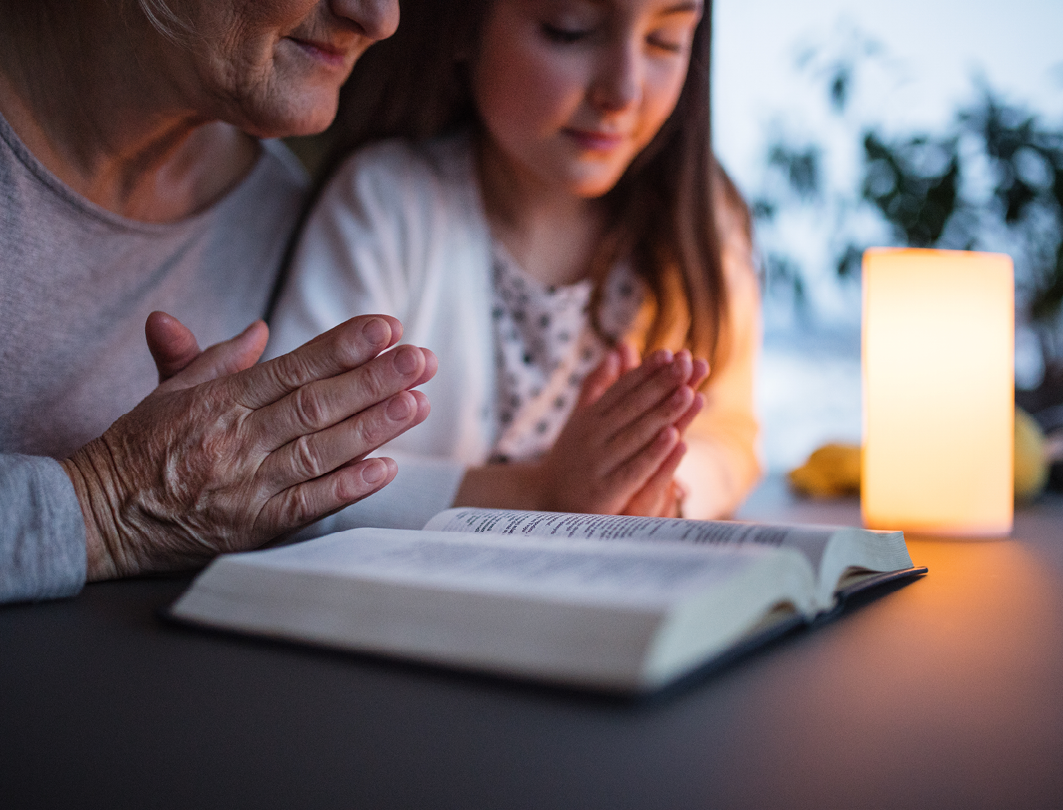
The primary way in which Catholics celebrate the Lord’s Day is by participating in the Sunday Eucharist. This is so central that the Catholic Church makes provision for Catholics to fulfill their Sunday Mass obligation by attending the Liturgy on Saturday evening. Remind students of the gift of celebrating Mass on Sunday.
Could we be missing out on the multiple benefits of the Lord's Day in ways beyond attending church? How can we keep holy the Sabbath Day more fully in our busy lives? According to the Catechism, "Christians will also sanctify Sunday by devoting time and care to their families and relatives, often difficult to do on other days of the week. Sunday is a time for reflection, silence, cultivation of the mind, and meditation which furthers the growth of the Christian interior life." (CCC, Part III.2.1.3)
Rediscovering Sunday. Expand students’ appreciation for Sunday as a Little Easter. Look for “Easter” in your faith formation program series. For example, in Be My Disciples, Grade 5, page 361, students learn how we fill our homes with signs of joy and new life on Easter. Ask students, “What signs of joy and new life are present on any given Sunday in your home?”
Food for Thought. On Easter, we bless and enjoy special food. You will find an example of a blessing prayer for Easter foods in Blest Are We Faith in Action, Grade 4, page 348. Why not adopt this food blessing for any Sunday of the year? Ask students, “What special foods do you and your family enjoy when you are spending a relaxing day together?”
Imagination Activity: Invite students to dream of their Perfect Sunday. “Given a whole day to be refreshed and rested, what would you do?” Students could draw a picture of their dream Sunday experience and share it with their families.
Take the Lord’s Day Challenge: Invite students to make a plan for ways to enjoy a restful and renewing four Sundays — in addition to going to Mass. After four weeks, ask for volunteers to report on their experiences.
Saturday Night or Sunday Table Prayer: Invite families to gather around the kitchen table. Practice the prayer around your classroom prayer table. You will find a prayer here.
Sunday Time Together: Sunday is a prime opportunity for parents and children to spend time together on the “Take Home Pages” pre-chapter home activities in Blest Are We Faith in Action and “With My Family” pages in Be My Disciples.
 About the Author
About the AuthorDr. Lauri Przybysz specializes in equipping families to live their vocation to be domestic churches and signs of God’s love. Lauri received the Doctor of Ministry from the Catholic University of America, and she has been both a Catholic middle school religion teacher and a faith formation coordinator at the archdiocesan and parish levels. She is the mother of 6 children and grandmother of 21.
Product Highlight
Blest Are We Faith in Action for Schools
Religion Curriculum - Grades K-8
Give students a solid foundation to put faith into action!
RCL Benziger is your Complete Solution for distance, hybrid, and classroom learning, providing you with engaging, high-quality Catholic religious education resources for the classroom and the home. No matter what learning environment you may find yourself in, we are committed to providing outstanding resources for students, teachers, and families.
The Blest Are We Faith in Action religious education program engages children, youth, and their families in learning what Catholics believe, how Catholics worship, how Catholics pray, and how Catholics live. Our technology-enhanced learning resources, including eGuides, eBooks, eAssessments, and online chapter reviews expand learning opportunities for students and flexibility for teachers.
Students will enjoy interactive connections with their textbooks, while teachers will find a variety of useful content for helping students on their formative journey of faith.
I have no doubt that teachers often find themselves in a similar situation as parents when dealing with children – talking and no one is listening.
 “I may as well be talking to the lizard,” my daughter-in-law is sometimes heard to say.
“I may as well be talking to the lizard,” my daughter-in-law is sometimes heard to say.
She is in good company, not only with teachers but with the saints. Particularly, St. Anthony of Padua, who gave up a life of wealth and power to serve God as an Augustinian (until he became a Franciscan).
This much-loved saint and doctor of the Church never set out to be a preacher, but God had plans for him so preach he did, often to heretics.
On one occasion, after several days of preaching the Gospel, St. Anthony became frustrated with those who refused to listen. So, he took himself off to a place where the river emptied into the sea and began to preach to the fish, who proved to be a much more willing audience.
Legend says that the fish came to listen to St. Anthony in multitudes, with their heads out of the water and seeming to look intently at the saint. When the people in town heard about the miracle, they all came to witness it, including the heretics who refused to listen the first time. Many were converted.
St. Anthony had success in his preaching because he learned over many years the value of being open to God and the power of the Holy Spirit. Preaching had been a hidden talent that he only discovered when circumstances brought him to a time and place when he was asked to “say a few words.”
No one expected much of St. Anthony in this regard, as he lived a quiet, prayerful, simple life away from the limelight. But when God brought him to it, he opened his mouth, and holiness and profound wisdom flowed out.
Our children also have hidden talents, and as adults in their lives, we have the exceptional privilege of helping them discover the gifts God has given them. Discovering these gifts means finding their passion which will be a source of joy and satisfaction for them as adults.
With limited time in a classroom, what is the best way to go about it?
Be an encourager – Encourage curiosity. Throughout the school day, children will have an opportunity to participate in a variety of activities and tackle a variety of subjects. In these moments children may discover a new interest or talent. But sometimes, children are reticent to try unfamiliar activities or subjects. Some of this stems from a fear of failure. Helping children understand the value of failure as a stepping stone to success is a crucial milestone for keeping them engaged.
Be a listener – Children love to talk about the things that interest them. Pay attention. What keeps them engaged? Who are their heroes, and who do they admire? Encourage them to talk about why they admire those people. What character traits do they exhibit? Do they resemble the Gifts of the Holy Spirit – Wisdom, knowledge, understanding, counsel, fortitude, courage, awe?
Discuss the saints – The saints, all unique and differently gifted, are perfect examples of the many varied gifts and talents God gives to each of us. Choose a few who appear in your Blest Are We or Be My Disciples curriculum. Use the free RCL Benziger Saints Resource for more information on a particular saint, like Saint Anthony of Padua.
Thank God in prayer – Provide an opportunity for children to thank God for their many gifts, even if they have not yet discovered them all. Encourage them to give thanks for the gifts of others, as well, and remind them of Psalm 139:13-14: “You formed my inmost being; you knit me in my mother’s womb. I praise you because I am wonderfully made; wonderful are your works!”

Mary Regina Clifford Morrell, mother of six and grandmother to nine, is a Catholic journalist, author, and syndicated columnist who has served the dioceses of Metuchen and Trenton, New Jersey, and RENEW International in the areas of catechesis and communication.
Product Highlight
Blest Are We Faith in Action Scripture Videos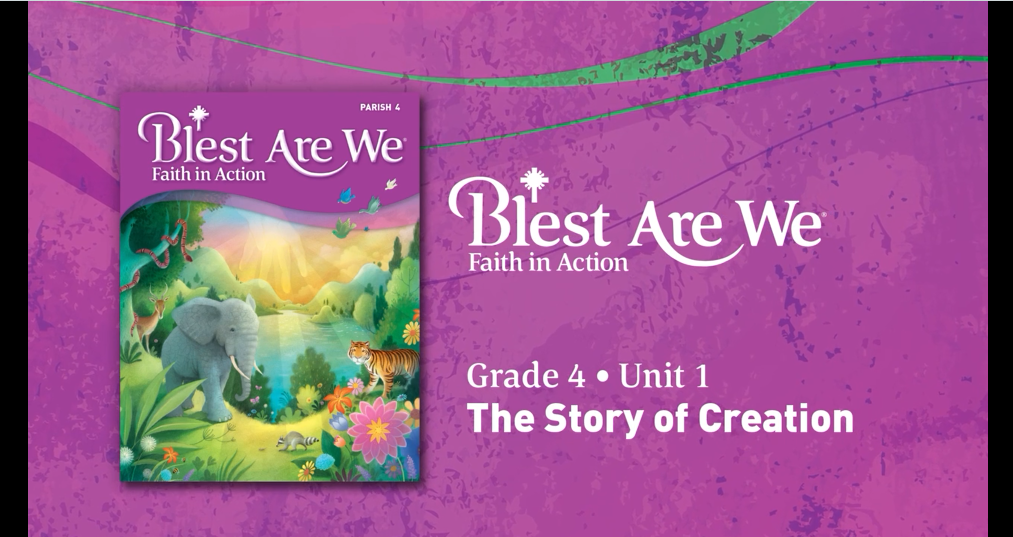
Religion Curriculum Grades 1-8
New for the Blest Are We Faith in Action Series – Scripture Videos for Grades 1-8!
Enjoy a selection of 40 Biblical scripture story videos that accompany the student lesson pages in our Blest Are We Faith in Action series. These Catholic Bible stories, saint stories, and parables of Jesus enhance the Catholic Faith lessons in your classroom. There are five unique scripture videos per grade level for students in grades 1-8.
“I’m just trying to push through. I’m ready for the year to be over.” I overheard several versions of this phrase throughout my time at the NCEA Conference in New Orleans a few weeks ago. Teachers, administrators, and support staff energized by the presentations, eager to talk about what they learned, and connect with others working within Catholic schools in person for the first time in years. But that thought continued to resonate with me–despite being inspired, eager, and connected, the reality awaiting them back in their classrooms loomed overhead.
I had the pleasure of presenting to around 45 professionals about the opportunities that can result from times of change and crisis–a rallying call to encourage those working within education to prioritize their mental health and focus on relationships as much as academics in this challenging season/climate in education. The faces in the crowd were smiling and nodding, feeling seen and heard, knowing their challenges (and triumphs!) were being acknowledged.
So here’s my thought–over the next few weeks, I would like to share with you a few strategies I shared in that presentation to inspire you, encourage you, and mostly help you recover from the end of the school year and begin to recharge your batteries this summer.
To start, we need to work on forgiving ourselves for feeling burned out, fatigued, or generally just run down from the rigors of the school year. I heard this expression earlier this year and it resonated with me: two things are true. The idea was to validate children’s feelings around the holidays, saying things like “two things are true: you can be grateful for the gifts you received, AND be disappointed that something or someone is missing.” This phrase can help us forgive ourselves of the feelings of guilt that can accompany this end-of-year blues.
TWO THINGS ARE TRUE:
- I can be a great teacher–AND also need a break
- I can be there for my students AND also need my own downtime
- I can be a dedicated teacher who loves what they do AND also be exhausted by my work
So in these next few weeks, forgive yourself for feeling guilty, short-tempered, or however you are feeling that is weighing you down in your final weeks of the school year, or your first few weeks of summer break. Remember your two things, and keep it like a prayer close to your heart: I can feel what I am feeling AND know that God walks beside me through these feelings.
 About the Author
About the AuthorAmy S. Kronberg is an early learning consultant and adjunct professor at the University of Dayton. Mrs. Kronberg began her work in early childhood education at the University of Michigan-Dearborn Early Childhood Education Center, where she learned about the Reggio Emilia philosophy, child-centered curriculum, and playful learning environments. She moved to Dayton in 2013 to complete her Masters of Science in Education, studying early childhood leadership and advocacy so she could learn to support children and families in understanding the value of and celebrating play. She is currently all but dissertation in Educational Leadership at the University of Dayton and specializes in early learning consulting for local nonprofits, infant and toddler learning, and social-emotional development.
Product Highlight
Stories of God's Love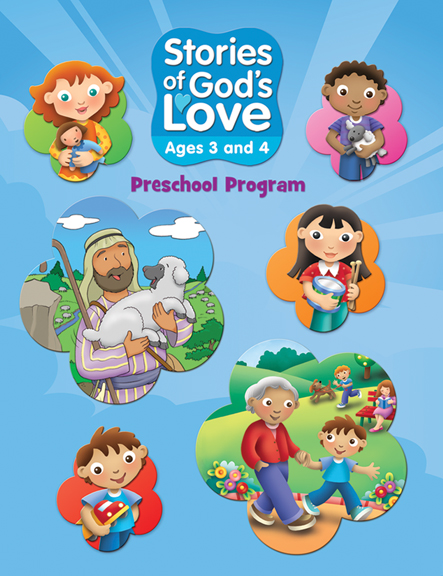
Religious Education for Ages 3-4, 4-5, and Kindergarten
Stories of God’s Love offers:
- A Scripture-based approach, presenting the Bible as the source for learning about God
- Age-appropriate formation with story leaflets and seasonal leaflets
- Program Director's Manual and in-print and ebook student books meeting the needs of school programs
- A family focus that helps children and their families live Christian values
- Online support for children, parents, and teachers
One of my favorite activities with my young grandchildren is pushing them on the swings and asking them to just listen. When we hear something new, like the wind in the leaves, cars in the distance, a bird calling, airplanes overhead or people talking a few houses away we try to be the first to tell the other.
I knew the game had become a habit for my grandson when in the middle of brushing his teeth he excitedly whispered “Listen!”
I stood quietly and listened to the sounds coming from the backyard. “What is it?” I asked him, still in a whisper.
“Frogs!” he announced and proudly proceeded to tell me what kind when they “sing” and when they don’t.
Children and nature go together. Left undisturbed they will dig under rocks to find bugs and collect pinecones, shells, old bird nests, and anything that might look like a fossil. When we encourage that relationship, we are helping them to discover the connection humans have to the earth.
In his 2015 encyclical Laudato Si’: On Care for Our Common Home, Pope Francis invites us to “discover what each of us can do” as we build a better future together and develop an ecological spirituality that helps us “discover God in all things.”
Included in that spirituality is an awareness of the beauty and purpose of creation, and an understanding of how human behavior either cares for or damages God’s gift of creation.
This year, Laudato Si’ Week 2022, will be held May 22-29 – a global celebration marking the seventh anniversary of Pope Francis’ landmark encyclical on creation care.
Among the seven goals of Laudato Si’ Week are ecological education and ecological spirituality, both of which lend themselves to incorporation in the classroom and as a summer project for students.
RCL Benziger offers a wonderful free downloadable resource on Laudato Si’, which includes a summary of the encyclical in English and Spanish, notable quotes from each chapter, and pages with activities for children on a variety of Laudato Si’ themes – water, endangered animals, recycling, consumerism, building a world to give our children, dignity of all human people and gratitude.
Laudato Si’ calls us to always be thankful to a good and gracious God who gave us all of creation and the home we know as earth. With summer on the horizon and many children soon to be on a long hiatus from school, one suggested activity to consider is a gratitude journal, which you might expand to a gratitude and discovery journal which students may add to throughout summer vacation.
Invite children to look for the small, daily ways in which God blesses our lives. It is easy to be thankful for the big things; be thankful for God’s big or small gifts. Add reasons to be thankful each day in the journal.
Encourage children to observe the world around them. Children are born full of curiosity which makes them natural at discovery. Direct them to include any new discoveries about plants, animals, insects or how people interact with creation in their journal.
Encourage children to include questions in their journals. Learning often begins with a question that needs an answer. They may find their own answer before they begin school again, or they may bring that question to their new teacher and class.
Encourage children to include prayer for creation in their journals and in their daily prayers. One suggestion from RCL Benziger’s resource: Father, we praise you with all your creatures. They came forth from your all-powerful hand; They are yours, filled with your presence and your tender love. Praise be to you! (Excerpt from A Christian Prayer in Union with Creation, Laudato Si’)
 About the Author
About the AuthorMary Regina Clifford Morrell, mother of six and grandmother to nine, is a Catholic journalist, author, and syndicated columnist who has served the dioceses of Metuchen and Trenton, New Jersey, and RENEW International in the areas of catechesis and communication.
Product Highlight
NEW! Be My Disciples Second Edition with the Family Life Connection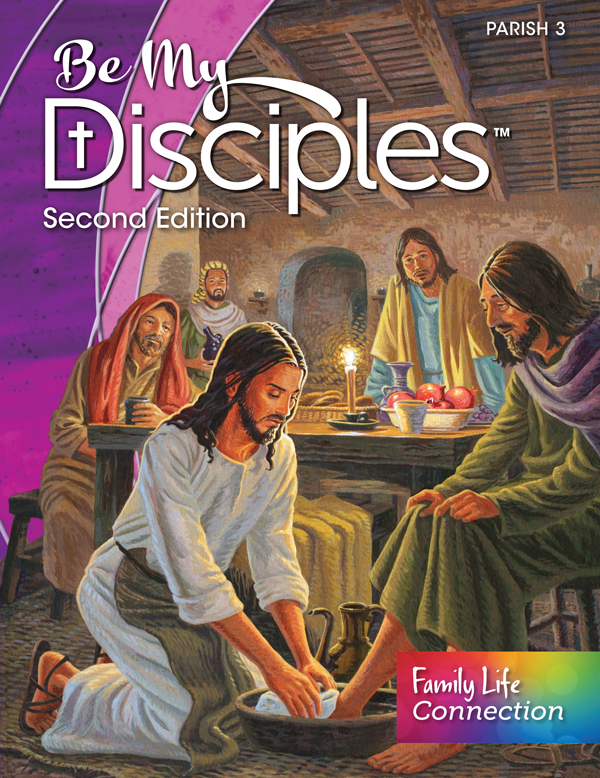
This new Parish Program for grades 1-6 now includes the Family Life Connection, an amazing family resource built right into the Student Edition textbook! Students will take home this two-page insert to help them build the skills they need to live healthy, holy lives. This newly updated and expanded edition encourages children to understand their role within the parish community and continue to grow in their identity as sons and daughters of God.
STUDENT EDITION
- Family Life Connection pages draw from our morality education program, Family Life.
- Children can deepen their understanding of Catholic values and virtues in their everyday lives and in discussing difficult issues.
- Quickly learn essential Catholic teachings related to Be My Disciples' lessons and their real-life experiences.
- Immediately practice strategies for effective communication, maintaining a safe environment, and building healthy relationships as a household of faith.
CATECHIST EDITION
Catholic Social Teaching lessons for each unit have been included in the Catechist Edition, with student resources available for download from Flourish. Each lesson encompasses a story that highlights one of the themes of Catholic Social Teaching and three suggested activities that invite children and their families to live out that theme in their homes and communities. Additional resources and catechetical tips have been added to the Catechist Edition. Existing books have been updated to feature the New American Bible, revised edition, as well as the current ritual texts for sacraments. Each chapter uses a new rotating feature called, Nurturing the Faith.
When you look at your class roster, you see a wide variety of names for your students. The Catechism of the Catholic Church explains, “Everyone’s name is sacred. The name is the icon of the person. It demands respect as a sign of the dignity of the one who bears it” (# 2158). God calls each person by name (Isaiah 43:1). Jesus, the good shepherd, “calls his own sheep by name” (John 10:3).
Parents choose a name for their child with great care, and they have many reasons for their selection. The name they chose had spiritual, cultural, or family significance for them. It is common to have the same of a patron saint, although it is not required. The Church teaches that any name can be chosen as long as it is not offensive to the Christian faith.
Our name is part of our identity. That is why making fun of someone’s name is a cruel torment, an attack on the person. You know what I mean if anyone ever ridiculed your name. On the other hand, someone in love delights in having a tattoo of their beloved’s name, carving it into a tree, or, in the case of teenagers, writing it over and over.
God apparently thinks names are important. He redubbed Abram and Sarai, his wife, Abraham and Sarah. God told Zachary to name his son John, and when that father did, he regained his power to speak. God instructed both Mary and Joseph to call His Son Jesus. It seems he wanted to make sure it was done. Later, Jesus changed Simon’s name to Peter, meaning “rock,” to signify his role in the Church. And he gave James and John the nickname Sons of Thunder. Mary Magdalene recognized Jesus when he pronounced her name. Stop a moment and imagine Jesus calling you by name.
Share with the students: Tell them about your own name and its meaning for you. Say, “You received your name officially at baptism. The priest met your parents at the door of the church and asked, ‘What name will you give your child?’ Then you were baptized, addressed by that name.”
Art Project: Embellish your name into an icon. Write the letters of your name on a paper, then decorate the letters however you wish. Add color, lines, shapes, or symbols to decorate and celebrate your name. Display the name-icons in the classroom.
Blest Are We Faith in Action Connections: For more opportunities to highlight our personalized call to discipleship, check your grade level program index for ideas related to the theme of Baptism and Vocation.
Some examples:
- Grade 2 Projects and Activities: Unit 1, “Role-Playing Baptism”
- Learn a song: Grade 5, Unit 2, p. 82. “Who Calls You by Name?” or Grade 4, Unit 1, p. 22, “Blest Are We.” Blest Are We Song Book and recordings are available for Grades K-8.
- Scripture Video (Grade 5 Organizer, Flourish): “Saul’s Conversion”
Enjoy a selection of 40 Biblical scripture story videos that accompany the student lesson pages in our Blest Are We Faith in Action series. To view the new scripture videos, Blest Are Faith in Action customers can log into their Flourish Account, and click on the Scripture Videos tab within the grade level organizer. To view a sample video click here.
 About the Author
About the AuthorDr. Lauri Przybysz specializes in equipping families to live their vocation to be domestic churches and signs of God’s love. Lauri received the Doctor of Ministry from the Catholic University of America, and she has been both a Catholic middle school religion teacher and a faith formation coordinator at the archdiocesan and parish levels. She is the mother of 6 children and grandmother of 21.
Product Highlight
 Blest Are We Faith in Action - School Edition Grades K-8
Blest Are We Faith in Action - School Edition Grades K-8
The Blest Are We Faith in Action religious education program engages children, youth, and their families in learning what Catholics believe, how Catholics worship, how Catholics pray, and how Catholics live. Our technology-enhanced learning resources, including eGuides, eBooks, eAssessments, and online chapter reviews expand learning opportunities for students and flexibility for teachers.
Students will enjoy interactive connections with their textbooks, while teachers will find a variety of useful content for helping students on their formative journey of faith.
Over the summer months, when your classes are not meeting formally, the faith formation of youth continues in the home and parish life. We are not taking a vacation from being a disciple of Jesus! Encourage your students to take time with their families to practice bringing Jesus’ love and mercy to their neighborhoods. We are called to practice the Corporal Works of Mercy in the world—simple ways we care for the physical well-being of others. Jesus tells us that when we do these Works for others, we are doing these Works for him (Matthew 25: 31-40).
Saint Teresa of Avila is said to have expressed this discipleship action this way:
Christ has no body but yours, no hands, no feet on earth but yours. Yours are the eyes with which he looks compassion on this world. Yours are the feet with which he walks to do good. Yours are the hands with which he blesses all the world. Yours are the hands, yours are the feet, yours are the eyes, you are his body. Christ has no body now but yours. No hands, no feet on earth but yours. Yours are the eyes with which he looks compassion on this world. Christ has no body now on earth but yours.
Learn more about the life and work of Saint Teresa, who was named a Doctor of the Church for her writing and teaching about prayer. Her biography and connections for grade-level lessons are available in the Saints Resource.
Catholic disciples are called to be in mission by putting two feet of love into action: social justice and charitable works: “The conscience is called by this social teaching to recognize and fulfill the obligations of justice and charity to society.” (Compendium of the Social Doctrine of the Church, no. 83) An illustration of the Two Feet of Social Action is available from the US Bishops’ Conference.
Our Family Gathers is available as an ebook for parish and home celebrations in every season of the year. Some concrete suggestions for practicing the Works of Mercy during summertime are listed on this flyer from Our Family Gathers in a free sample for the Easter Season, “Putting Faith into Practice” at home in summer. Some examples:
- Feed People Who Are Hungry: Help in a community garden.
- Give Drink to the Thirsty: Volunteer to hand out water at a local marathon or service event.
- Clothe People Who Need Clothes: Clean out your closet and donate unused items to a local clothes closet.
 About the Author
Dr. Lauri Przybysz specializes in equipping families to live their vocation to be domestic churches and signs of God’s love. Lauri received the Doctor of Ministry from the Catholic University of America, and she has been both a Catholic middle school religion teacher and a faith formation coordinator at the archdiocesan and parish levels. She is the mother of six children and grandmother of 21.
About the Author
Dr. Lauri Przybysz specializes in equipping families to live their vocation to be domestic churches and signs of God’s love. Lauri received the Doctor of Ministry from the Catholic University of America, and she has been both a Catholic middle school religion teacher and a faith formation coordinator at the archdiocesan and parish levels. She is the mother of six children and grandmother of 21.
Pagination
Latest
Categories
Archives
- February 2015 (2)
- March 2015 (2)
- April 2015 (5)
- May 2015 (3)
- June 2015 (6)
- July 2015 (3)
- August 2015 (5)
- September 2015 (5)
- October 2015 (4)
- November 2015 (2)
- December 2015 (1)
- February 2016 (2)
- March 2016 (1)
- April 2016 (2)
- May 2016 (2)
- July 2016 (2)
- August 2016 (2)
- September 2016 (1)
- October 2016 (5)
- November 2016 (1)
- December 2016 (3)
- January 2017 (2)
- February 2017 (3)
- March 2017 (2)
- April 2017 (1)
- June 2017 (2)
- July 2017 (2)
- August 2017 (1)
- April 2018 (1)
- October 2018 (2)
- December 2018 (2)
- February 2019 (3)
- March 2019 (2)
- April 2019 (2)
- May 2019 (3)
- June 2019 (1)
- July 2019 (16)
- August 2019 (8)
- March 2020 (4)
- April 2020 (6)
- May 2020 (8)
- June 2020 (7)
- July 2020 (5)
- August 2020 (7)
- September 2020 (4)
- October 2020 (5)
- November 2020 (9)
- December 2020 (11)
- January 2021 (10)
- February 2021 (8)
- March 2021 (5)
- April 2021 (4)
- May 2021 (4)
- June 2021 (5)
- July 2021 (2)
- August 2021 (3)
- September 2021 (4)
- October 2021 (4)
- November 2021 (2)
- December 2021 (5)
- January 2022 (4)
- February 2022 (4)
- March 2022 (9)
- April 2022 (7)
- May 2022 (9)
- June 2022 (12)
- July 2022 (7)
- August 2022 (10)
- September 2022 (9)
- October 2022 (11)
- November 2022 (8)
- December 2022 (7)
- January 2023 (2)
- February 2023 (10)
- March 2023 (9)
- April 2023 (10)
- May 2023 (8)
- June 2023 (4)
- July 2023 (3)
- August 2023 (2)
